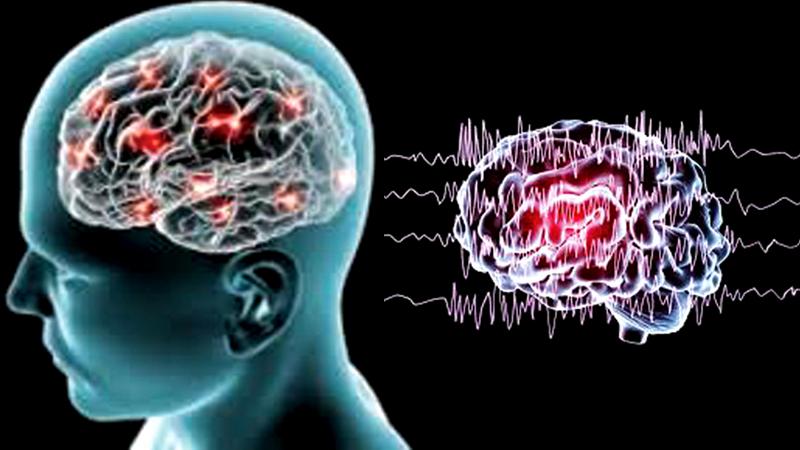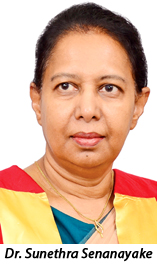
As health officials including neurologists and non governmental activists come together to stand as one to raise awareness about Epilepsy, one of the commonest neurological conditions affecting the brain, they will this year also focus on the rights of such persons who due to lack of knowledge, stigma and myths that surround the disease have been forced to delay seeking treatment despite its availability in almost every hospital.
 The Sunday Observer spoke to Senior Consultant Neurologist , National Epilepsy Centre, NHSL who is also the President of the Epilepsy Association of Sri Lanka , Dr. Sunethra Senanayake to share her expertise on the causes of Epilepsy , treatment and obstacles preventing patients from obtaining available treatment benefits.
The Sunday Observer spoke to Senior Consultant Neurologist , National Epilepsy Centre, NHSL who is also the President of the Epilepsy Association of Sri Lanka , Dr. Sunethra Senanayake to share her expertise on the causes of Epilepsy , treatment and obstacles preventing patients from obtaining available treatment benefits.
Excerpts…
Q. In three days’ the world will observe another International Epilepsy Day on February 10. As many still don’t know what epilepsy is or have wrong ideas of this condition, tell us what is Epilepsy in simple layman language.
A. Epilepsy is a clinical condition that presents with recurrent seizures (Fit). This happens due to sudden short lasting abnormally firing electrical activity of the nerve cells in the brain that can affect the whole or part of the brain. This starts without any prediction and stops on its own. During this short period a person may lose consciousness or become unresponsive. He can lose balance and fall. Onlookers may witness abnormal movements (shaking or fitting ) in the whole body or part of the body which is commonly seen together with the loss of consciousness. There may be frothing from the mouth, abnormal breathing, passing urine without one’s knowledge.
Q. Can an epileptic person injure himself/herself while having a seizure?
A. Yes. Injury is possible while having a seizure.
Q. Is it a common condition? Is there an age limit or can anyone get it? Do you have any data on how many people globally suffer from epilepsy? If so who are the most vulnerable groups?
A. Epilepsy is considered to be one of the commonest non communicable disease affecting the brain. It is a common neurological disorder seen in any age group, and most common in children and young adults. About 50 million people worldwide suffer from epilepsy, 80 percent of them live in low- middle income countries. Up to about 70 percent of them can live a seizure free life if properly diagnosed and treated. (WHO- 2019 report)
Q. What causes it?
A. In most people with epilepsy the exact cause is unknown. Any significant injury to brain such as birth injuries, road traffic accidents, strokes, infections in the brain, brain tumours, can predispose to epilepsy later in life. In some people it is due to genetic reasons.
Q. How to you recognise the symptoms of a seizure?
A. The symptoms of seizures depend on the area of abnormal electrical activity of the brain. In some forms of epilepsy abnormal electrical activity happen in the whole brain. These persons have major seizures, present with sudden loss of consciousness, convulsions or shaking of the whole body, starting as rigidity (tightening of the hands and feet), breaking into vigorous jerky movement of the body, together with grunting sounds in the throat, frothing from mouth, and incontinence of urine. This major seizure type can also be a threat to life.
Some people with epilepsy can have different presentations. They may feel abnormal sensations of smell, fear, anger, or show staring episodes. They can become unresponsive, or may have unusual purposeless movements of the mouth or of the hands mostly noticed by the others.
Q. Can the symptoms be mistaken for some other condition?
A. Yes. Syncope or fainting attacks often seen in children. They lose consciousness and express fearful emotional response to seeing blood, or in the event of an accident or when faced with a sad experience. Standing long periods in hot climate could also be a cause.
Q. Any other factors?
A. Low blood sugar,certain heart conditions, such as heart blocks, certain types of strokes (TIA) and attacks of migraine. Panic attacks in some people can be mistakenly diagnosed as epilepsy
Q. Let’s talk of Lankan patients. What are the commonest symptoms in epilepsy patients in Sri Lanka?
A. Almost all the above described symptoms are well identified in Sri Lankans. Loss of consciousness, jerky movements, loss of awareness are the commonest.
Q. Can they be mistaken for symptoms that occur due to some other conditions?
A. Epilepsy and fainting attacks often tend to mistake each other.
Q. How long do seizures usually last?
A. A seizure normally lasts up to two minutes but most end even before that. If a seizure continues for more than five minutes, or if the person does not recover fully, it is important that he/she be taken to a qualified doctor for examination or admitted to a hospital.
Q. What usually happens as soon as he/she recovers?
A. Once the person regains consciousness he / she often complains of headache and drowsiness and wants to sleep.
Q. What age groups are more vulnerable to seizures? Why? What are the triggers that cause a seizure?
A. Any one can have seizures, but those who have any predisposing causes are more vulnerable to seizures.
There are well known triggers for epilepsy, such as breaking sleep doing night duties, or being awake all night for various reasons, missing meals leading to low blood sugar, using psychoactive drugs (nowadays a very significant reason for new onset seizures in teenagers) or missing medication used to treat epilepsy precipitate an attack of seizure in an epileptic person.
Q. While epilepsy in adults is common, do babies also get epilepsy?
A. Babies do get epilepsy. Genetic tendency, birth injuries, low blood sugar or meningitis in the newborn are the most common causes. If a baby gets a seizure he / she always needs detailed evaluation by a pediatrician.
Q. Can allergies set off an attack?
A. Allergies have no direct impact on setting off an attack of seizure, but high fever for any reason can trigger a seizure.
Q. If a close relative has epilepsy what are the chances of a person in the same family inheriting it?
A. In genetic causes of epilepsy, first degree relatives are said to have two-four fold chances of inheriting it.
Q. Does stress at work and at school and the increasing pressures of life contribute to epilepsy?
A. Stress and anxiety are well recognised triggers for seizures in people with epilepsy
Q. Treatment wise - who treats epilepsy? What are the methods used?
A. First choice of treatment is anti-epileptic drugs. The choice of these medications depend on many factors, for example, type of epilepsy, age of the patient and gender, availability and cost of the medicine.
There are other treatment methods for patients who do not respond to anti-epileptic medications. They need extensive evaluation to consider epilepsy surgery or other types of treatments. However, I strongly advise whoever has a seizure to seek medical advice and treatment early to live a seizure free life. In the case of a child having epilepsy seizure I advise parents to meet a pediatrician or pediatric Neurologist. In an adult, a Physician or Neurologist should evaluate the patient.
Q. Once a person gets an epileptic fit can he /she get another seizure again? If so, how soon after the initial attack?
A. By definition epilepsy is a disease that one has a chance to have recurrent seizures. Chances of seizure recurrence depend on factors such as underlying cause in the brain, provoking factors, type of seizures.
In a patient having first seizure without identified reason (unprovoked seizure) has 20 percent chance of seizure recurrence in the first 12 months. There is a higher chance of seizures in the first six months after the first attack.
Q. The theme for this year by the World Association for Epilepsy is ‘Shine a light on Epilepsy’. What is the significance?
A. Shine a light on Epilepsy” means how one can contribute to save a life, and help an epilepsy person live a normal life and no matter where or who you are join together to accept people with epilepsy.
Q. Obstacles in detection and treatment of Lankan patients?
A. Many epilepsy patients do not seek medical advice early. About one-third of patients in low income countries do not receive proper treatment. Social stigmata, myths and false beliefs, discouragement, disrespects in peer groups play a major role in epilepsy patients’ lives. People with epilepsy are also often rejected in schools, workplaces or marriage.
Q. We are now in the midst of a Covid-19 outbreak? Are epileptic patients more vulnerable to this virus?
A. The available data so far does not provide the evidence of increased risk of epilepsy patient getting Covid-19 than the general public, nor do they not get severe disease due to epilepsy per se.
Q. Interventions by your Association to help epileptic patients?
A. Awareness programs on epilepsy with mass media is a regular event in our calendar. Awareness programs in detecting seizures and first aid in seizures for school teachers, primary health care workers, setting up a social service support for epilepsy patients to make them live independently are the areas we now focus on.
Q. Any shortcomings in the present care and detection of epilepsy patients in Sri Lanka?
A. Most epileptic children in Sri Lanka are discouraged from attending school, due to fear of parents and teachers. Poor social status, misbeliefs such as, ‘devil’s disease’ prevent them seeking proper medical advice, while some people tend to stop treatment half way due to false beliefs.
Q. How do you like to see them rectified?
A. Our society need to be educated in all aspects in epilepsy, how to recognise its symptoms, basic first aid in handling an epilepsy patient. Epilepsy patients and care givers should be educated on how to accept living with epilepsy.
Q. Your message to our readers?
A. Epilepsy is a treatable, common neurological disease that occur in all age groups. It is not a disease to be ashamed of. An epileptic can live a normal life with no restriction to education, marriage, or having children.
If you are a person with epilepsy try to learn about your condition and also educate people you closely associate with. Treatment for epilepsy takes at least three years of seizure free period. Once you start treatment make sure to adhere to advice from the treating Physician.
